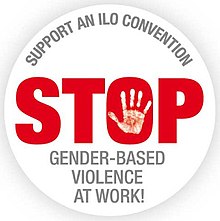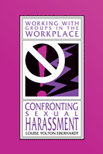The current spate of prominent figures being accused of sexual harassment and then fired from their positions of power gives the impression that the tide has turned…cases of sexual harassment will be heard and appropriate action will be taken against the perpetrators.
According to NPR in an article by Yuki Noguchi,
…in actual courts, such cases filed by workers against their employers are very often dismissed by judges. The standard for harassment under the law is high, and only an estimated 3 percent to 6 percent of the cases ever make it to trial.
That stands in stark contrast to the large pool of people who say they have experienced sexual harassment. In surveys, a quarter to half of women say they’ve experienced sexual harassment at work. But only a small fraction — estimates range around 5 to 15 percent of women — report their complaints to their employers, largely due to fear of retaliation. Legal experts say the high dismissal rate of sexual harassment cases also has a chilling effect.
-Yuki Noguchi, National Public Radio Correspondent
Legal standards for harassment are tough. The same article from National Public Radio continues:
In a 1986 decision, the Supreme Court said the behavior needs to be “severe or pervasive” in order to qualify as harassment, whether it’s on the basis of sex or race. …judges’ interpretations of what qualifies are out of step with common sense and standard office policies.
-Deborah Rhode, director of Stanford’s Center on the Legal Profession
It often takes a kind of cultural consciousness raising moment like the one that we’re having now to force a reevaluation of standards. Everything that we’ve seen on the #MeToo hashtag suggests that there’s a lot of pent-up fury out there, and more of these women are going to seek legal recourse and attorneys in this social climate are going to think they’re more likely to win and get substantial damages.

Indeed, Cincinnati employment attorney Randy Freking says his office recently has seen an uptick in potential clients alleging sexual harassment, against the backdrop of more and more allegations going public.
Freking says he only takes cases that have a decent shot at winning, and warns his clients that even the strongest cases always have a good chance of getting dismissed. And the emotional cost can run high.
Retrieved from https://www.npr.org/2017/11/28/565743374/sexual-harassment-cases-often-rejected-by-courts January 18, 2018
Very few people realize that judges just have this power to toss cases out, despite the fact that the Constitution has a right to a trial by jury,” Freking says. “And for a woman who has been sexually harassed, and been victimized by their employer like that, and then just have that OK’d by some federal judge? It just absolutely rocks your world.
-Yuki Noguchi, National Public Radio Correspondent
But…times they are a-changin, right? And things are improving for those who need protection of the law. Somewhat. One of the difficulties is addressing the myths of what is and isn’t sexual harassment. Another is making sure that employees recognize the gender power structure that is there.
 While we wait for the courts to catch up with reality here are two exercises, from the book Confronting Sexual Harassment, that you can use in the workplace or with your clients to help get a handle on the complicated issue of sexual harassment. The first exercise deals with the myths that abound about what it is and what it isn’t, who is and who isn’t being sexually harassed.
While we wait for the courts to catch up with reality here are two exercises, from the book Confronting Sexual Harassment, that you can use in the workplace or with your clients to help get a handle on the complicated issue of sexual harassment. The first exercise deals with the myths that abound about what it is and what it isn’t, who is and who isn’t being sexually harassed.
The second exercise helps participants examine gender power and its relationship to sexual harassment. Participants create their vision of a model equal gender power organization.
